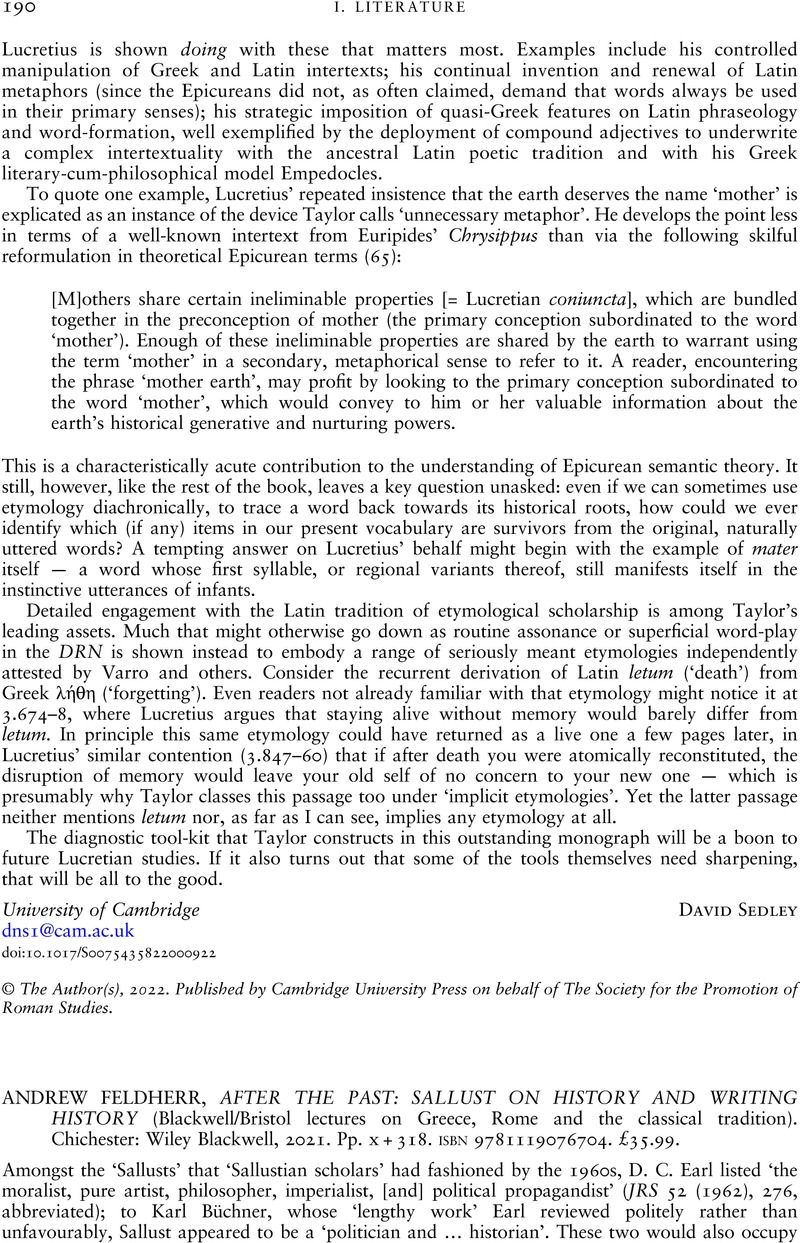No CrossRef data available.
Article contents
ANDREW FELDHERR, AFTER THE PAST: SALLUST ON HISTORY AND WRITING HISTORY (Blackwell/Bristol lectures on Greece, Rome and the classical tradition). Chichester: Wiley Blackwell, 2021. Pp. x + 318. isbn 9781119076704. £35.99.
Review products
ANDREW FELDHERR, AFTER THE PAST: SALLUST ON HISTORY AND WRITING HISTORY (Blackwell/Bristol lectures on Greece, Rome and the classical tradition). Chichester: Wiley Blackwell, 2021. Pp. x + 318. isbn 9781119076704. £35.99.
Published online by Cambridge University Press: 04 January 2023
Abstract
An abstract is not available for this content so a preview has been provided. Please use the Get access link above for information on how to access this content.

- Type
- Reviews
- Information
- Copyright
- Copyright © The Author(s), 2023. Published by Cambridge University Press on behalf of The Society for the Promotion of Roman Studies


